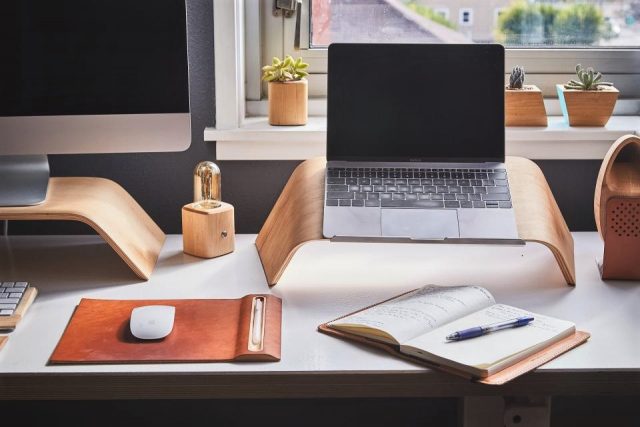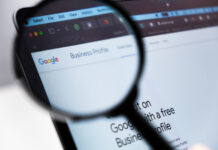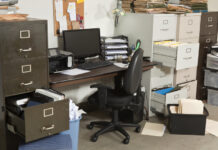Big business is figuring out that the way to a productive business is through healthy employees. As a home-based business owner, this is true for you as well.
It’s not that we’re bad people, or that we aren’t working hard. The problem is that what our minds and bodies need at a basic level is in conflict with our work style. We are so focused on work, on getting things done, that we’ve changed the way we eat, move and sleep in a way that is actually counter-productive.
What are some of those unhealthy habits that we need to break? Here is a comprehensive list of negative behaviors with suggestions on what to do instead.
1. Don’t assume that sitting is the only way to work. It’s not.
I know, you’ve read the news and have heard that sitting for long periods of time is bad for your health. The issue isn’t that we sit; the issue is that many of us sit and work without standing or walking for many hours at a time. Walking on a treadmill desk for 8 hours a day is not the answer either (at least for most of us).
Instead:
- Stand up every 30 minutes and walk around every hour and a half, even if it’s just for a few minutes.
- Find surfaces around your home that are bar-height (like the kitchen counter) and stand and work for a few minutes each day.
- Take phone calls, watch presentations, read or perform other activities while standing up or even walking if it makes sense for the task at hand.
Why?
This will not only improve cardio metabolic health, but it will also prevent conditions like deep vein thrombosis. According to a recent study, reactive thinking improves during walking and creativity levels are consistently and significantly higher for those walking compared to those sitting. Walking has also been shown to help with improved attention and short-term recall.
2. Don’t multi-task while eating.
Mindless eating (eating while your head is focused on something else) typically results in eating faster and consuming more calories than if you were seated at a dining table and paying attention to what you eat.
Instead:
- Eat away from your primary workspace. Keep food and drinks away from your keyboard tray.
- Invite your clients or vendors to have lunch with you and use eating time to connect face-to-face. Host a “virtual lunch” via Skype!
Why?
You will automatically make better choices when you are eating without multi-tasking, because you are more aware of what you are putting in your mouth.
3. Don’t let your kitchen enable bad eating habits.
You know how you walk into a grocery store and find yourself buying junk food at the end of the aisle? Or have you noticed how candy is located at child-eye level by the checkout counter? Foods that are easy to spot and presented well are not put there by accident, and food companies pay for the privilege. The secret is “choice architecture,” a term for different ways in which choices can be presented to consumers, and the impact of that presentation on consumer decision making. Don’t fall victim to this while you are working!
Instead:
- “Hide” unhealthy foods in your kitchen by putting them in opaque or translucent containers (versus healthy food like fruit or nuts in glass containers).
- Brian Wansink, director of Cornell University’s Food and Brand Lab, and author of Mindless Eating, suggests a number of ways our eating behavior is significantly impacted by the way food is presented to us. For example, in some of his studies, people were likely to snack more (44 percent more) in kitchens that were tidy vs. kitchen environments that were cluttered with paper, dirty dishes, etc. So keeping the kitchen clean is more than just a sanitation issue, it can affect how much we eat!
- He also found that people are more likely to eat less on plates that are 9-10 inches in diameter. People tended to pile up food on plates that were larger, and felt “deprived” and go for a second helping when eating on smaller plates (say, 6 inches in diameter).
Why?
Healthful foods cut down on extra calories with no nutritional value, which helps productivity and the bottom line.
4. Don’t let the papers pile up.
Paper on your desk can be full of dust and dust mites, which for many people can trigger serious allergies and asthma. Interestingly, Xerox did a study done a few years ago looking at how often we use the paper by our desk. They estimated that as many as two out of every five pages printed in the office are for what it calls “daily” use, such as e-mails, Web pages, and reference materials that have been printed for a single viewing. I’m willing to bet that now, a few years later, the amount of paper we need to keep lying around is much less.
Instead:
- File paperwork and put in place a system for removing paper or moving paper off-site that you don’t need access to on a regular basis.
- Put in place a good system for scanning and digital filing of documents, so that you and your team know where to find things later. A trusted electronic system can help reduce the need for a paper back-up.
Why:
No dust mites, and a cleaner desk can improve air quality. Also, removing paper can give the appearance of having more space in your home office. The feeling of being “crowded in” increases stress and decreases our satisfaction with our work area.
5. Don’t email after hours.
Late night chatter increases stress, decreases sleep, and impacts long-term productivity. You are impacting the stress and sleep of everyone on your cc list when you send them emails at night.
Instead:
- Wait until normal business hours to send emails, or if you must write something, don’t press “send” until the morning, or Monday morning if you’re working on the weekend.
- Consider using project management or communication tools with your team that allow participants to choose when they want to work on something.
Why?
Good email behavior results in more productivity and better sleep! One New York real estate executive I spoke with has banned internal emails and uses new tools like Slack and Asana with his team. Using new tools has allowed his team to work on projects in a more streamlined fashion, without a lot of back-and-forth, saving stress and time and improving communication.
6. Don’t skimp on vacation time.
When you’re self-employed, it’s easy to skimp on vacations. You’re typically paid based on your productivity, so taking a week off means no pay check. Taking no vacations at all is even more expensive.
Instead:
Factor in that cost of taking a week off into the vacation budget. Plan them, take them, and enjoy yourself. Give yourself permission to unplug. You and your family need it.
Why?
You need it to refresh and revitalize to be more effective. And, your family will love you for it. According to John De Graaf, who made a documentary about overworked Americans called Running Out of Time, there is a high cost to not taking vacations. “Women who don’t take regular vacations are anywhere from two to eight times more likely to suffer from depression, and have a 50 percent higher chance of heart disease,” he says. “For men, the risk of death from a heart attack goes up a third.”
7. Don’t stay indoors all day.
A good portion of our global workforce spends 90 percent of each day indoors, which essentially puts workers in a state of “light deficiency” and it negatively impacts our sleep cycle.
Instead:
Get outside, preferably earlier in the day, and for as long as you can.
Why?
We need more intense light to reset our circadian rhythm, which helps us sleep. Some sleep experts recommend being outside as much as 2 hours a day, but even going outside for 30-60 minutes during the day — say over a lunch break or during a walking meeting outdoors, will provide roughly 80 percent of what you need to “anchor” your circadian rhythm, according to Dan Pardi, a researcher at Stanford and Leiden University.
8. Don’t put work before your health.
If you aren’t healthy, you can’t get anything done and you won’t be there for your clients, vendors, friends and family when they need you. Especially if you are affected by chronic health issues.
Instead:
Make your health a priority, and start by building time in your calendar to work out, to relax or do something that gives you energy and sparks your personal passion.
Why?
Healthy business owners are more productive. The most obvious benefits to the bottom line are the avoidance of health care costs, but when you invest in your own health and wellbeing, studies have shown there will be increases in creativity, engagement, productivity and as a result, business growth.
Being our emotional, physical and mental best is foundational to doing our best work. It’s time to get our priorities straight, and make our health and wellbeing a foundation for good business, not just a “nice to have.” Use these techniques to incorporate healthy habits and practices into the workday and increase your ROI.
Find a Home-Based Business to Start-Up >>> Hundreds of Business Listings.

















































